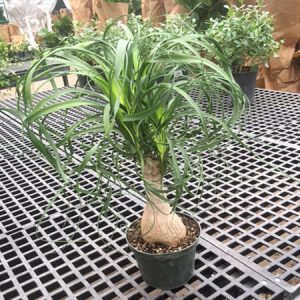Description
Calathea –
There are about 300 species of evergreen rhizomatous perennials, in this genus. They occur in humid forest and at forest margins in tropical Central and South America, and the West Indies. Most are clump forming, with large ovate to elliptic, shiny, long stalked, pale to dark green leaves, often attractively patterned and purplish-red on the reverse, young plants may differ from mature plants in the size and color of their foliage. Hidden among the leaves it bears pairs of small flowers, that are rarely produced in cultivation, are tubular with extended upper and lower lips, and are carried in racemes or dense spikes, accompanied by sheathed bracts, in summer. One species is grown as food crop, yielding small starchy tubers, grow as a houseplant.
Indoors, grow in soilless or soil based potting mix in bright indirect or filtered light, with high humidity, draft free conditions, and a constant temperature. When in growth, water freely and apply a balanced liquid fertilizer monthly, water moderately in winter. Divide clumps in late spring.
Prone to spider mites, bud mites, mealybugs, aphids, fluoride toxicity, leaf necosis leaf spots, fungal leaf spots, and bacterial leaf spots.
C. majestica ‘Roseolineata’ – C. ornata ‘Roselineata’ – This robust, clump forming perennial grows 6′ feet tall and half as wide. It produces elliptic, unequal-sided leaf blades, 12-16″ long, erect at first, then spreading, on leaf stalks 8″ or more long. Leaves are deep olive-green above, with pairs of tin, rose-red lateral stripes on opposite sides of the midribs, becoming white with age, the undersides are purple. Bears ovoid spikes, 2-3″ long, of white flowers, with violet petal lobes.
Zones 14-15





